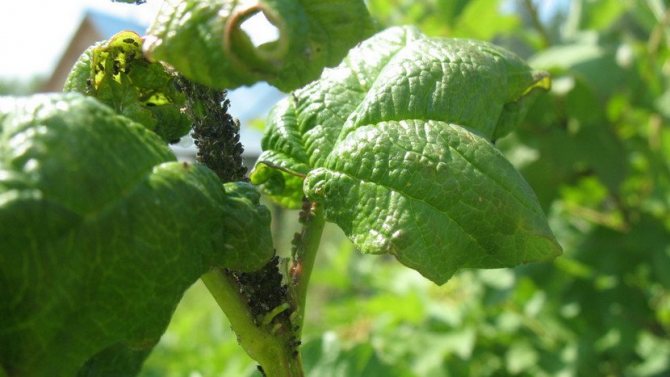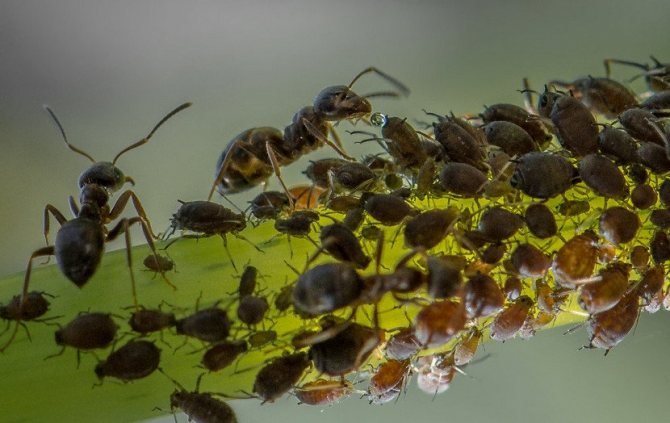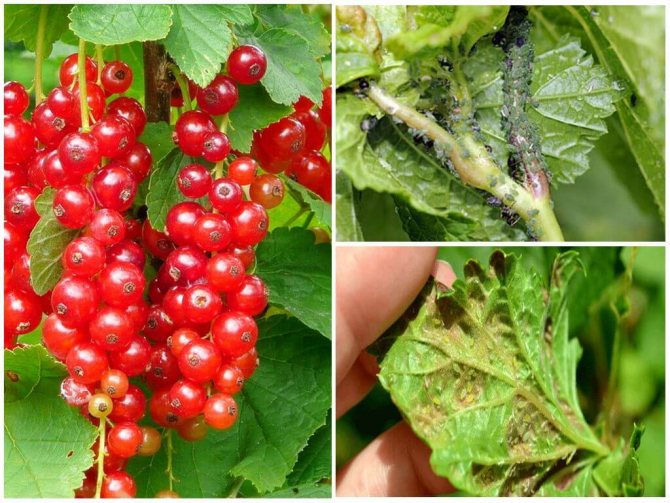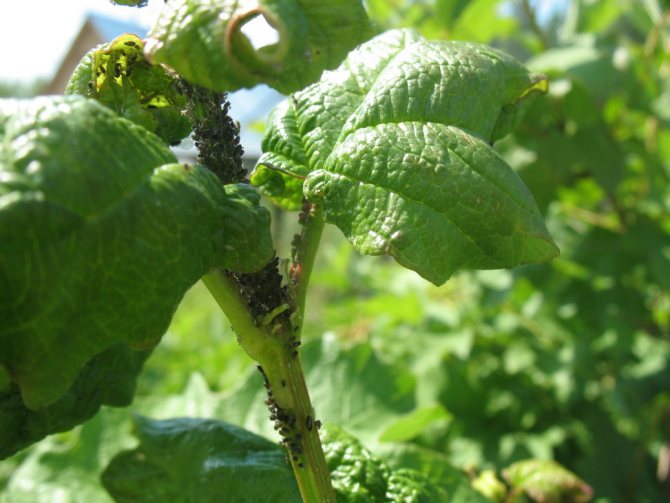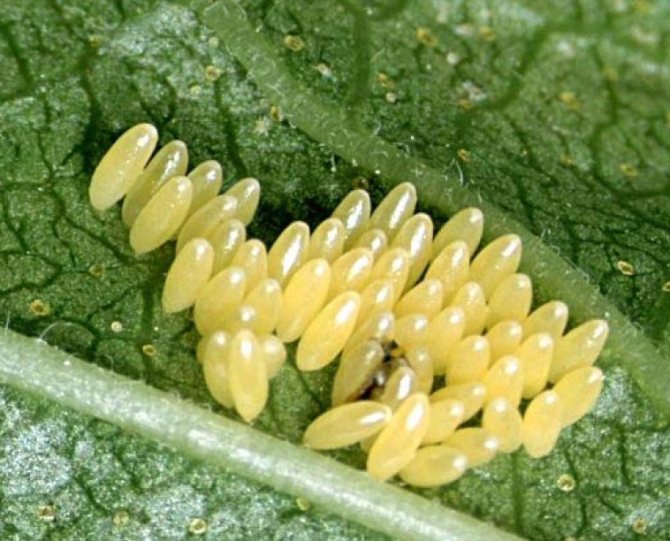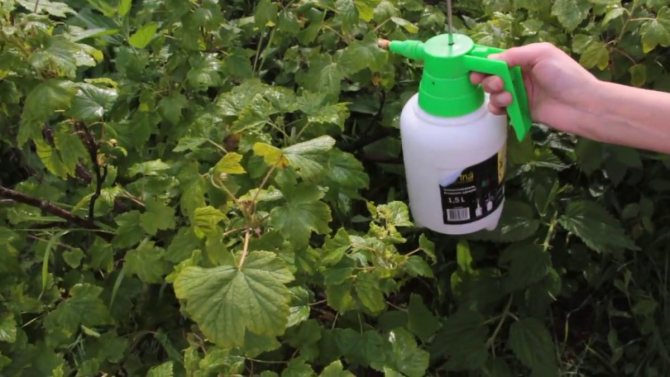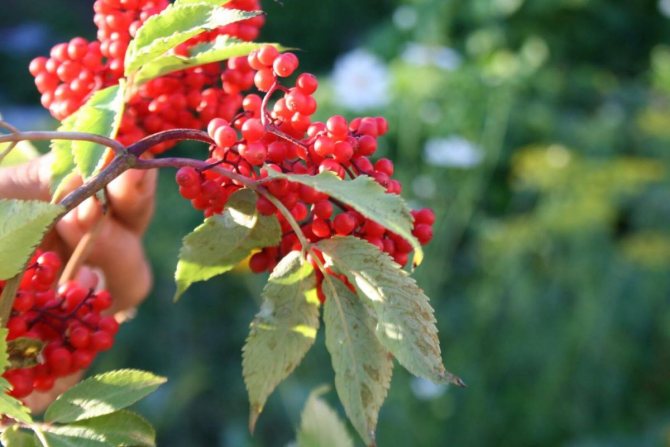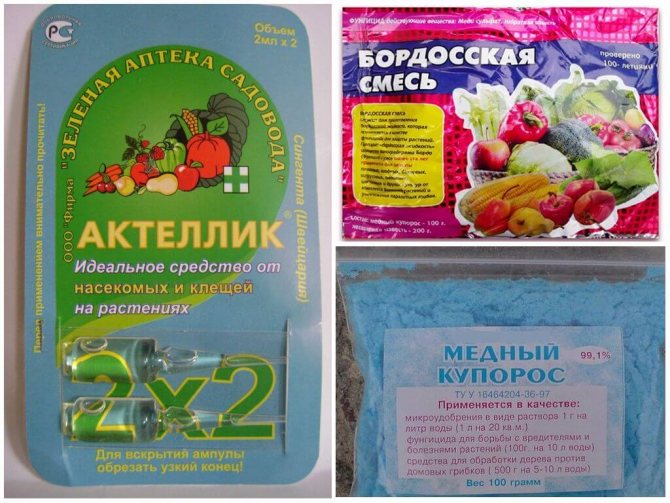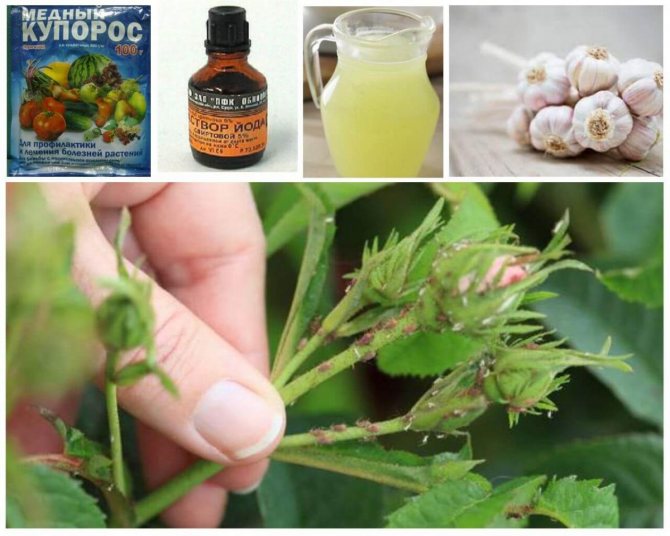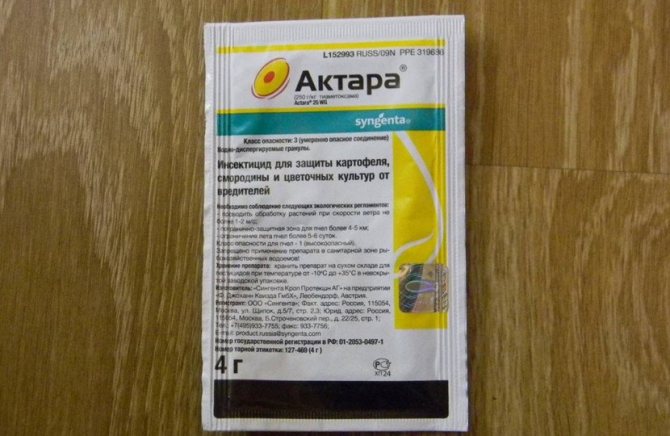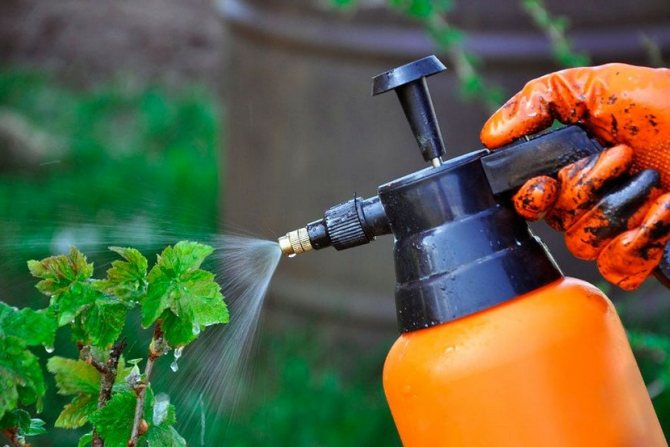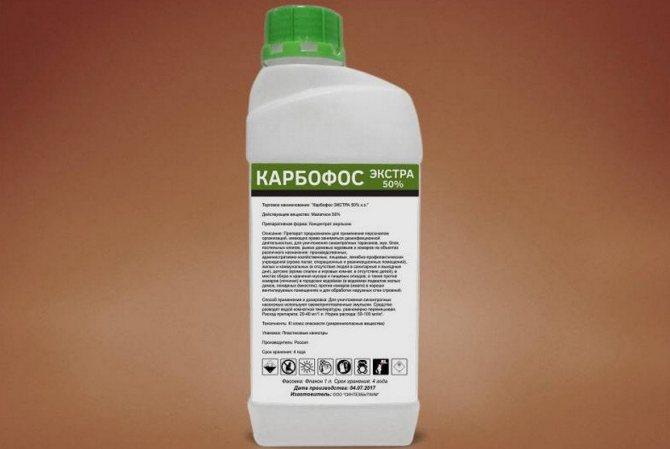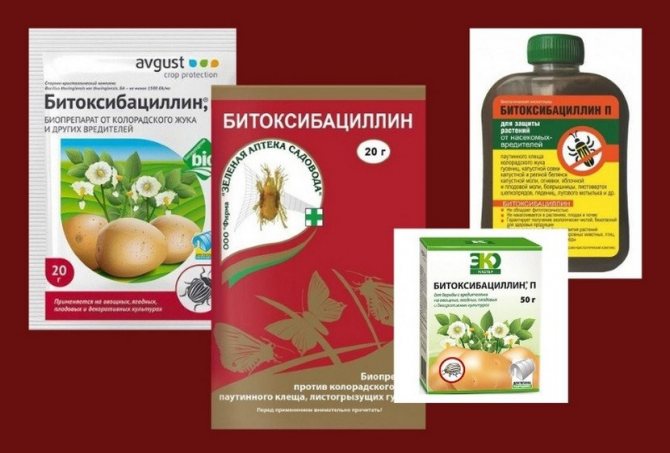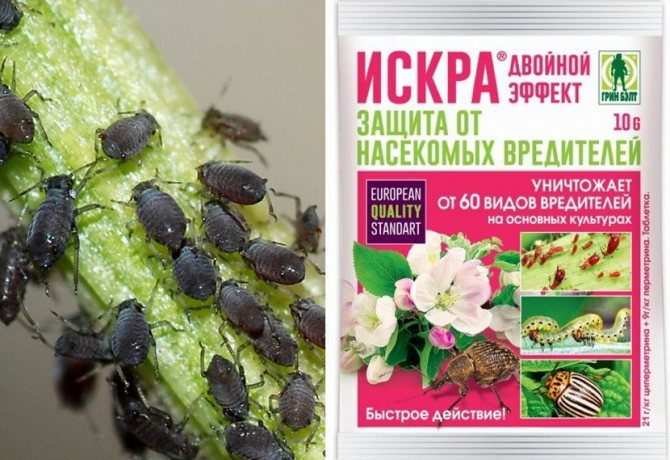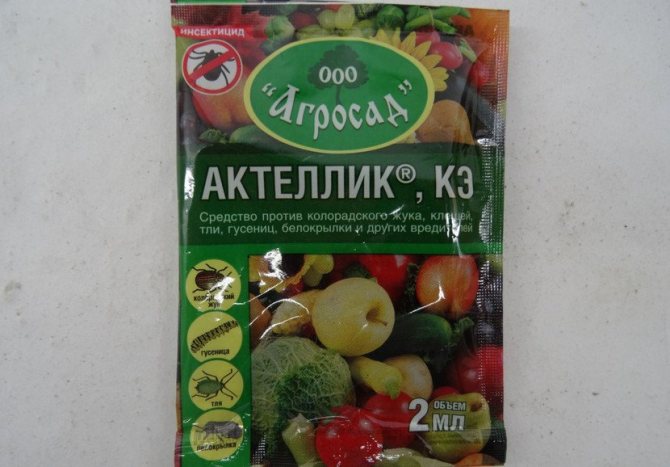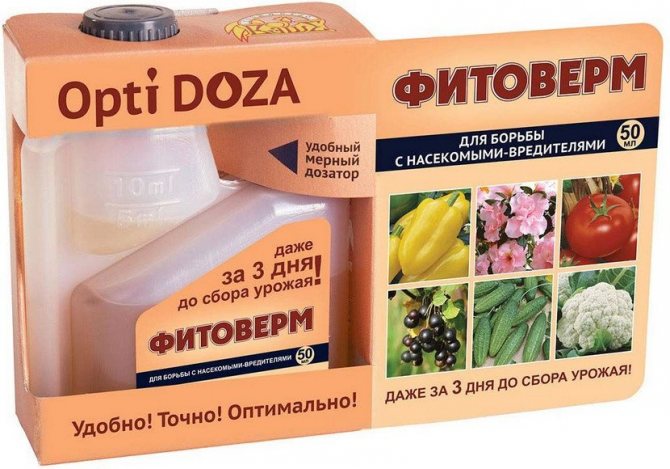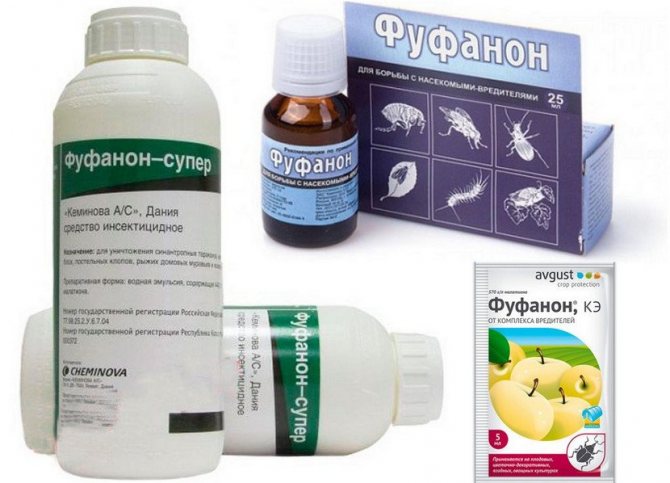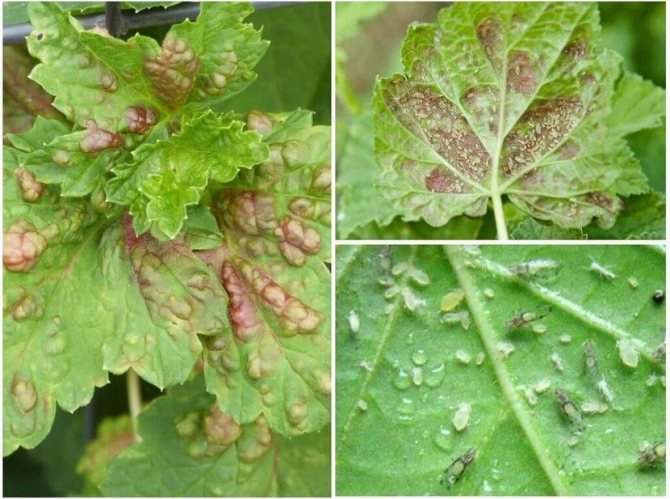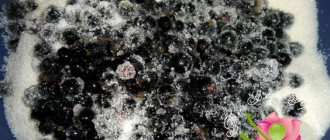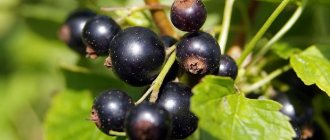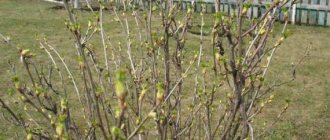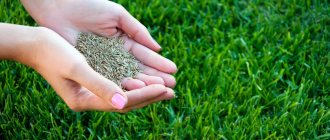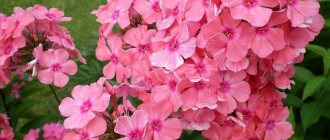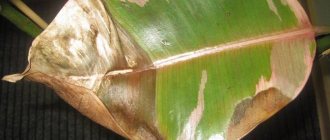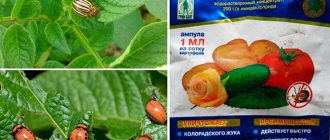Home / Pests and diseases
Back to
Published: 11.10.2018
Reading time: 5 min
0
735
Not only we love currants, but also harmful insects, unfortunately, also adore it. Only now we enjoy the fruits and cherish the bushes, and insect pests "devour" the berries and leaves. Gallic aphid loves currants. This parasite with great pleasure sucks juice from currants than destroys it. What to do if aphids start up on the currants? How to protect currant bushes from the invasion of this ruthless pest?
- 1 How to detect a pest
- 2 Aphids on currants: how to fight?
- 3 How to get rid of aphids on currants?
- 4 Rules for fumigating currants
- 5 Using boiling water
- 6 Chemicals
- 7 Control of aphids without the use of drugs
- 8 Emergency method
- 9 Prevention
How to detect a pest
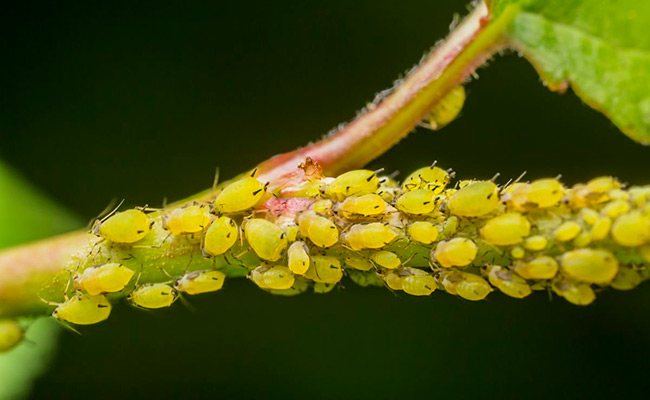
When the colony of this insect is large, it is easily detected. Sticky spots of the waste products of aphids are visible on the leaves or twigs, the leaves curl into a tube, the growth of young shoots stops. In such a situation, you usually have to resort to chemicals. Even a novice gardener will always notice this problem.
Another thing is the initial stage of the appearance of these parasites. You can see the eggs, and the larvae of aphids only through a magnifying glass. They can appear at any time of the year. It is important to know that aphids on currants lay eggs next to the buds, and they calmly survive our harsh winters. In early spring, look at the currant branches with a magnifying glass. If you find tiny black dots, it means that uninvited guests will soon come to your currant. How to prevent their invasion?
Have questions? Ask and get useful advice from professional gardeners and experienced summer residents. Ask a question >>
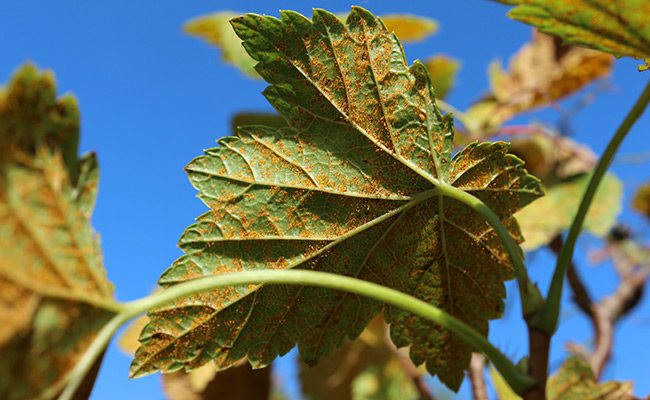

Aphid larvae appear with the onset of warmth, and the pest is most aggressive from the end of May to mid-June. Black ants are crawling on currants. Aphids are a nurse for them. Many unknowingly think that ants eat aphids, but in fact they do not feed on insects, but on the products of their vital activity. The gummy substance tastes sweet, and the ants love it.
Amazingly, black ants are capable of cultivating aphids. They carefully transfer the larvae to more succulent leaves, to neighboring bushes. Moreover, for the winter, they always carry away many aphid larvae to their anthill. In the spring, they are again delivered to tasty green stuff.
Of course, besides the invasion of black ants, there are other signs of aphids. These are reddish swellings on the leaves of red and white currants, and the black leaves roll up into tubes. You can easily see sticky spots on the branches or leaves of currants. At this stage, the growth of young shoots stops, so the currants no longer have the strength for this. And the young twigs are eaten by the shoot aphid. The currant aphid also lives on raspberries.
What happens to the plant due to insects?
Gallic aphids prefer colored currants - white, red, burgundy. It affects black currants much less often. This is explained by the fact that the leaves of the colored currant are more delicate than those of the black one, therefore, it is easier for the pest to suck the juice out of it.
The result of active reproduction of aphids is the appearance of bulges and tubercles on the leaves of the berry plant, disfiguring the leaf.If such leaves are turned over, then you can find tiny insects on them, which are gall aphids. Sucking sap from leaf blades, aphids contribute to their deformation..
After that, new shoots stop growing and the development of the bush stops, which has a negative effect on the yield of currants.
Where and why do pests come from?
Many gardeners on their plots are faced with gall aphids. As soon as the weather is warm and dry, aphids attack young shoots and currant leaves. Plant infection occurs in two ways.:


aphids are carried to plants by ants;- young individuals emerge from those eggs that were laid in the fall in the cracks in the bark.
Before the cold weather, ants hide aphids and their eggs in anthills, and with the first heat they carry them to young plants and protect them from ladybirds. When a lot of aphids are bred on a plant, ants begin to spread it to other trees and shrubs. Ants feed on the juice secreted by aphids - honeydew (You can learn more about the symbiosis of aphids and ants in this article).
But the aphid also independently takes care of the continuation of its kind. In the middle of summer, females and males with wings are born, which can fly to other plants and already lay their eggs on them in the bark of trees so that they can overwinter there. The cycle repeats itself, and in spring new aphids are born from the newly formed clutch.
Aphids on currants: how to fight?


You need to know how to deal with blackcurrant aphids. Whatever means you use, follow the rules, without which your fight against aphids on currants will not be successful.
Spray the bushes in calm weather, after sunset. The wind can quickly sweep away your product from the leaves and branches, and under the influence of solar ultraviolet radiation, many products lose their properties, they can even harm the plant.
Work with both chemical and folk remedies with rubber gloves and a mask. So you protect yourself from the likelihood of an allergic reaction.
Do not try to experiment with any aphid chemicals or folk remedies. Adding other components to recipes is fraught with disastrous consequences for currants.
Do not treat aphids on currants when it is raining.
The greatest effect is obtained by complex treatment of bushes. This is a mechanical collection of affected leaves, spraying and fumigation, done in one day.
How much damage is done?
Aphids mainly affect young shoots, piercing the surface of the leaves and feeding on the sap of the plant. To tighten the puncture sites, currants produce a special tissue that looks like a growth. The healthy structure of the leaf is disrupted, photosynthesis slows down, and the plant receives less energy for the growth of shoots and ripening of berries.
Damaged branches will not be able to fully bear fruit next year and tolerate an unfavorable period much more difficult. The overall yield and winter hardiness of plantings are decreasing.
Gall aphids carry the hazel grouse virus, which is much more difficult to fight than pests.
How to get rid of aphids on currants?
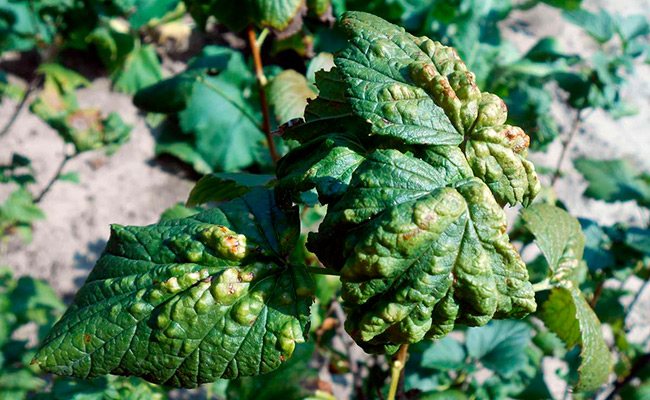

It makes sense to use folk remedies for aphids on currants with early detection of the parasite. Their most important advantage is that they are completely harmless to currants, and to other horticultural crops too. If the aphid colony has multiplied strongly, then chemistry cannot be done without. All homemade aphid recipes involve the same technology. Its essence lies in the infusion of components in water or boiling. Before use, the infusion or decoction is filtered and used for spraying the bushes.
What folk remedies are used to process currants from aphids? It has long been noticed that red currant gall aphids do not like the smell of potatoes.Infusion of potato tops is an excellent remedy against these pests.
Onion infusion is much more effective than potato infusion. After two or three treatments, the aphid disappears from the bushes for a long time.
A tried and tested remedy is a decoction of wood ash. It not only drives out pests, but also enriches the soil under the bushes with potassium. It is made with the addition of tar soap. The broth is used for spraying. Soap acts as an ash fixer on currant leaves and branches.
Tobacco infusion is also quite effective. They are sprayed with bushes at intervals of one week. This product can be stored in a cool dark place for a long time.
Also ammonia saves from aphids on currants. The smell of ammonia, like ammonia, repels the pest.
Sparing methods of struggle
You can get rid of pests on currant bushes in different ways. When choosing a remedy, it is necessary to take into account, first of all, the degree of damage. If there are few plants affected by aphids, and the insect colony has not yet managed to grow on them, folk recipes will come to the rescue. The infusions made on them are safe for humans and animals, and they can be made from improvised means.
- Wood ash. Add 3 liters of hot water to 2 glasses of the substance and dissolve 1 tbsp. l soap (liquid or household soap is suitable). You can spray the currants with the resulting composition in a day, having previously filtered it. Ash will perform 2 functions at once: it will scare away aphids and provide plants with nutrients.
- Liquid soap (you can use any dishwashing detergent instead). 2 tbsp. l of a viscous substance is dissolved in 1 glass of water. The composition is used immediately after preparation. To destroy pests, currants are sprayed with them daily. The agent acts on the respiratory organs of aphids, clogging them up and causing the death of insects.
- Tobacco dust (makhorka). Pouring 1 liter of water into a container, add 100 g of dry mass to it. The mixture is placed on the stove, brought to a boil and kept on low heat for 1 hour. The cooled agent is filtered and diluted with water, adding 300 ml of tobacco infusion to a bucket of water. It is better for them to spray currants from a spray bottle. Re-processing is carried out after 2 days. To enhance the effect, you can mix tobacco with wood ash. For 10 liters of water take 400 g of each substance.
- Soda ash. To prepare an aphid remedy, the drug is dissolved in water (1 tbsp. L of the substance per 1 l), adding a little soap to it.
Good results are obtained by processing currants with herbal infusions. Some common plants scare off aphids.
- Celandine. Its tops can be used fresh (3-4 kg) or dried (1 kg). Filling the grass with 10 liters of water, it is left for 24-30 hours. Use the product after straining.
- Dandelion. Its roots (200 g) or leaves (400 g) will help get rid of insects. Add 10 liters of warm water to a container with vegetable raw materials. It will be possible to process the bushes affected by aphids with dandelion infusion after 2 hours.
- Onion. Insects are frightened off by the smell of its husk. The infusion is prepared from it for 4-5 days. For 10 liters of water, take 200 g of husk. Green feathers will also come in handy. Means for spraying currants from them are prepared in the same way, but the volume of plant materials is increased to 3-4 kg.
- Hot pepper. After crushing its pods, they are poured with water (1:10) and, after boiling for 30 minutes, left for 2 days. Then the composition is filtered. Before processing the currants with it, the infusion is diluted (100 ml per 1 liter of pure water). Aphid repellent can be made from orange or lemon peels, wormwood, tansy, and yarrow. They use the same recipe, but with one difference: you do not need to dilute the resulting composition.
- Potato tops. Finely chop it and pour boiling water (the proportions should be the same), let the mixture brew. After 2 days it is filtered and the currants are sprayed with it. In the same way, an infusion of marigolds and tomatoes is prepared.
To save the garden from aphids, you have to try.Insects live on the lower part of the leaves, so you need to spray the currants so that the poisonous compounds fall on it. The use of a spray bottle will increase the effectiveness of the procedure. Do not forget about safety rules. A face mask and rubber gloves on hands will protect the skin and respiratory system from harmful substances.
Advice
For the prevention and control of infection, professionals fumigate black and red currants with dry stems of celandine. Will scare off aphids and tobacco-ash mixture. The lower part of the leaves is powdered with it. It is recommended to do this in high humidity (after rain or watering). Ash is also poured under the bushes from spring to autumn.
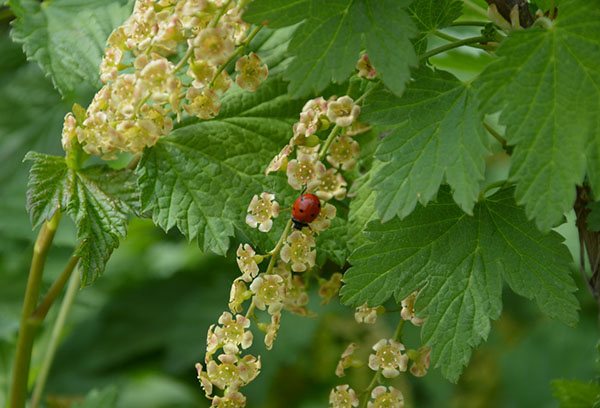

Rules for fumigating currants
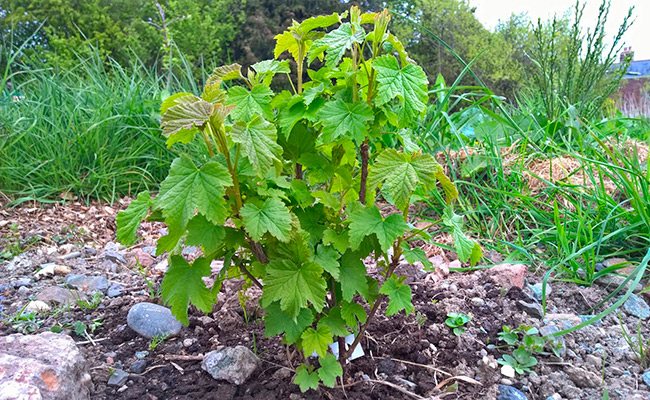

In the fight against gall aphids on currants, gardeners use fumigation with tobacco smoke. It gives excellent results, but it is quite a laborious task. It is enough to correctly perform this procedure once, and the aphids will leave the currants alone for a long time.
For a smoker, you can use damp straw or hay. Spread two to five kg of tobacco leaves on top of the smoker, be sure to moisten them abundantly.
After that, the smoker can be set on fire, but do not let the flame flare up. Straw and tobacco should smolder, but not burn. Keep a spray bottle with water close at hand. As soon as a flame arises, spray it immediately. Place the smoke on the area with currants in such a way that every single bushes are in the smoke.
Varieties of aphids and signs of its appearance
In nature, there are more than 4 thousand species of aphids, 8 of which are dangerous for currants and other fruit and berry crops. Each species is recognized not only by its external characteristics, but also by secondary signs of its vital activity.
For currants, the following are considered harmful:
- red-gall aphid;
- bird cherry;
- beetroot;
- blackberry;
- green;
- currant salad;
- peach.
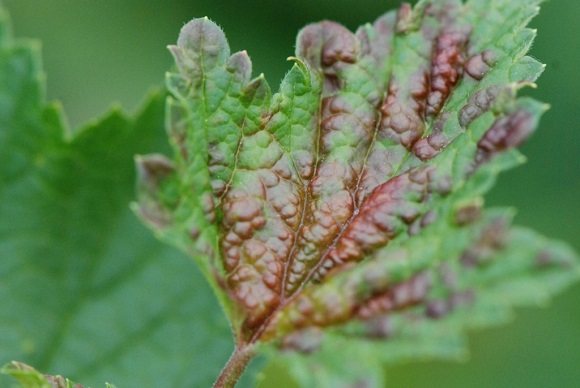

The result of the harmful activity of the gall aphid
The red-gall type has winged and wingless varieties. The first is distinguished by its larger size and rich green color. Winged representatives have a watery yellow body, a pair of transparent wings. The pest can be recognized by the reddish swellings in the central part of the currant leaves. The branches of the infected shrub are dotted with galls - reddish-brown growths in which aphids breed. If damaged, insects patch up the breakdowns with their own bodies and milk, as a result of which they die.
Using boiling water


You cannot scald currant bushes with boiling water, but pouring very hot water from a watering can and should be.
In early spring, when the snow melting has not yet ended, examine the currant bushes under a magnifying glass. If you see tiny black spots near the buds, it means that the aphid is preparing to attack the bush. What to do to prevent aphids from attacking currants? At this time, it is very easy to destroy the egg clutch and thereby prevent the larvae from being born.
Prepare a watering can with a fine cooking spray, boil water in a bucket, and then pour it into a watering can. In this case, the boiling water will cool down a little, and under its influence there will be no scalding of currant branches. Watering currant branches with such hot water should be abundant, do not be afraid that the plant will suffer from this. The eggs of the pest will all die. Water the near-stem circle of the bush especially carefully - it usually contains the most eggs.
Preventive measures


If aphid lesions were found in the garden area, then the gardener should always be on the lookout. "Faithful" friends of aphids, ants, will try and spread the pest throughout the garden. To reduce labor costs to combat a tiny, but voracious pest, preventive work should be carried out to prevent its appearance.
- It is necessary to conduct a constant fight against garden ants, which are carriers of aphids from plant to plant, and for the winter they hide it in their nests.
- Keep the trunk circle clean. Remove weeds in a timely manner and, if possible, plant in the immediate vicinity plants that repel the pest: onions, garlic, parsley, coriander, basil. Among flowers, tansy, marigolds, calendula, nasturtium, cosmea have such properties. The smell of flowers does not like aphids, but attracts beneficial insects that eat the pest: ladybugs and lacewings.
- Remove damaged shoots and branches during the spring and fall shaping of the bush.
- Loosen the soil under the plant and around the circumference of the entire crown regularly.
- Remove loose bark from currant trunks, which can serve as shelter for pest eggs during winter.
Chemicals
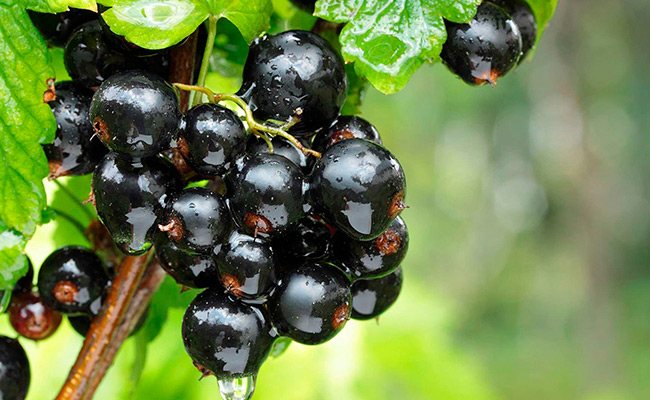

You already know that the use of chemicals is a last resort. They not only destroy aphids, but also harm the plant itself. You need to use them only in strict accordance with the instructions, which must be attached to the package. It is important to remember once and for all that these funds can be used no later than two weeks before the start of berry picking.
There are many chemicals on the market for aphids. Experienced summer residents and villagers recommend using three of them, which are the best in every way. These are concentrates actellik, aktara and kinimiks.
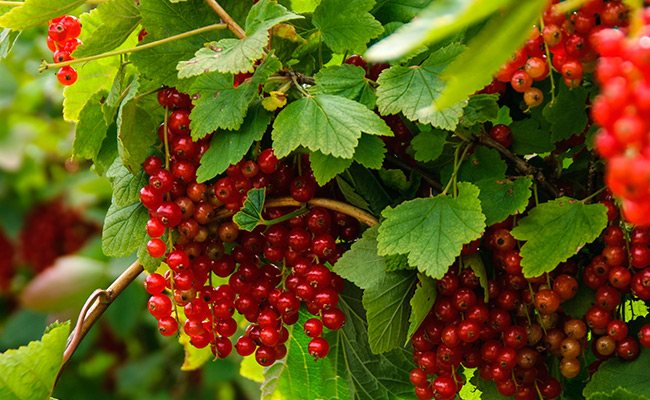

Aktelik is a liquid concentrate sold in ampoules. To prepare two liters of solution, it is enough to use one ampoule.
Aktara is a powerful powder concentrate. No more than one and a half grams of powder can be used per liter of solution.
Kinimix is a liquid and also a very strong concentrate. One ampoule is enough to prepare ten liters of solution.
Practice shows that with proper spraying, one procedure is enough to completely destroy aphids. Sometimes gardeners do it carelessly, then some of the pests survive. This means that the second treatment should be done, but not earlier than 10 days later.
By the way, aphids can adapt to a particular remedy, so don't use the same remedy for two years in a row.
Fighting aphids without the use of drugs


It is possible to do without chemical or folk remedies in the fight against aphids, subject to the early detection of the first uninvited guests. To do this, carefully examine each leaf and each branch on the currant bush. Tear off affected leaves immediately and cut off affected branches. Burn everything that has been removed from the currant.
After mechanical cleaning, continue to inspect the bushes daily. If aphids reappear, then you will have to first apply folk methods of dealing with it. Among them are vinegar, infusion of celandine. It is good to plant garlic and mustard nearby - they will protect the currants from aphids.
Emergency way


It happens that there is no way to buy or prepare your own aphid remedy. For example, we arrived at the dacha, and these pests were bred on the currants. There is no store nearby, there are no necessary ingredients for the preparation of protective equipment. Common laundry soap diluted in water can help.
The solution should be similar in density to liquid office glue. They need to spray abundantly on the bushes affected by aphids. The essence of this method is that the soap covers the larvae and adult insects - they simply suffocate. It is clear that this method does not work in rainy weather.
Phytosporin will also help you. Today this drug is so popular that many summer residents purchase it in advance so that it is always at hand.
Prophylaxis
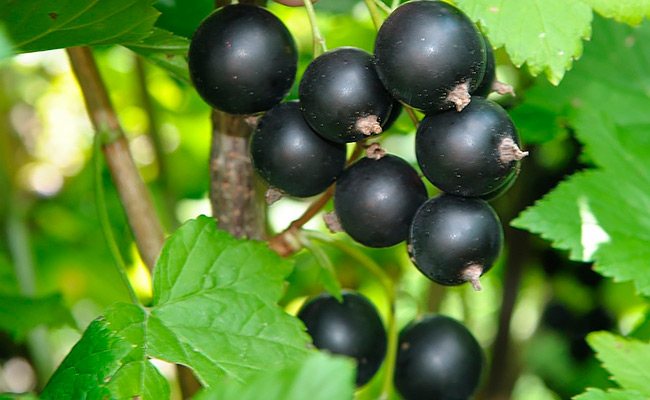

- Plant dill or carrots next to the currants. The smell of these plants scares away aphids and at the same time attracts the hoverfly, which eats this parasite.
- Destroy black ants in the area.
- Plant some lavender or thyme between the rows of bushes. Aphids cannot stand their smell.
- It does not hurt to pour some sawdust between the rows of currants. Earwigs like to live in them - the worst enemies of aphids.
- Set up several birdhouses on the site. Starlings eat aphid larvae.
- At the first detection of aphids, immediately begin to destroy it.
Olga Danilina

